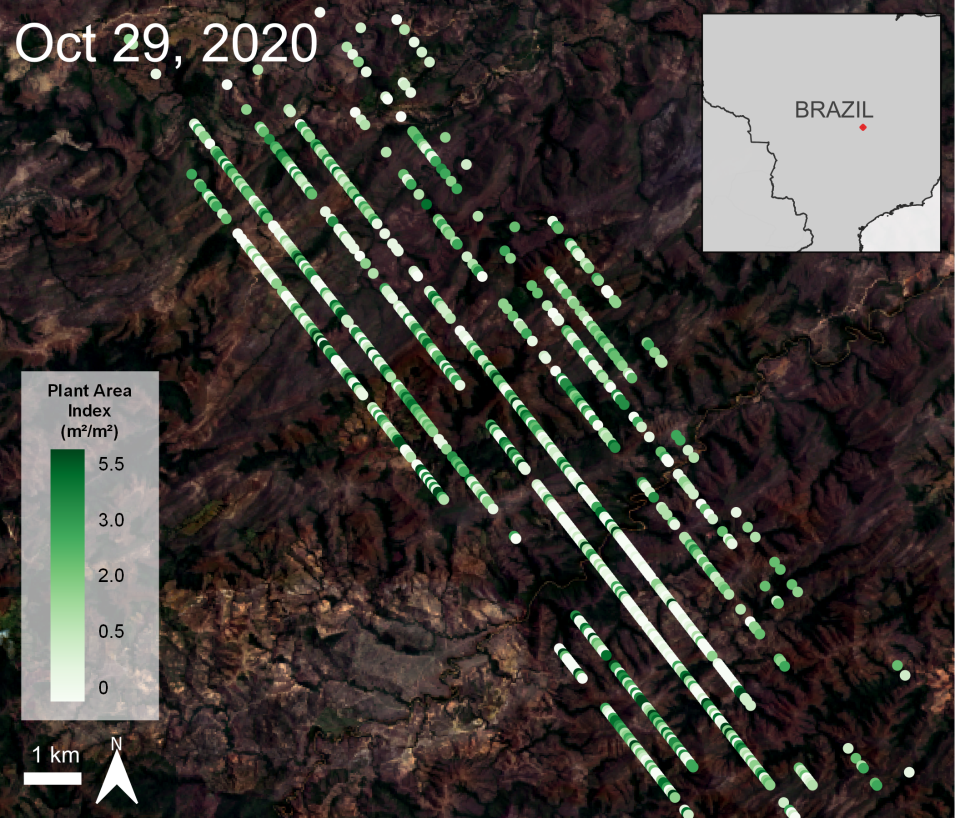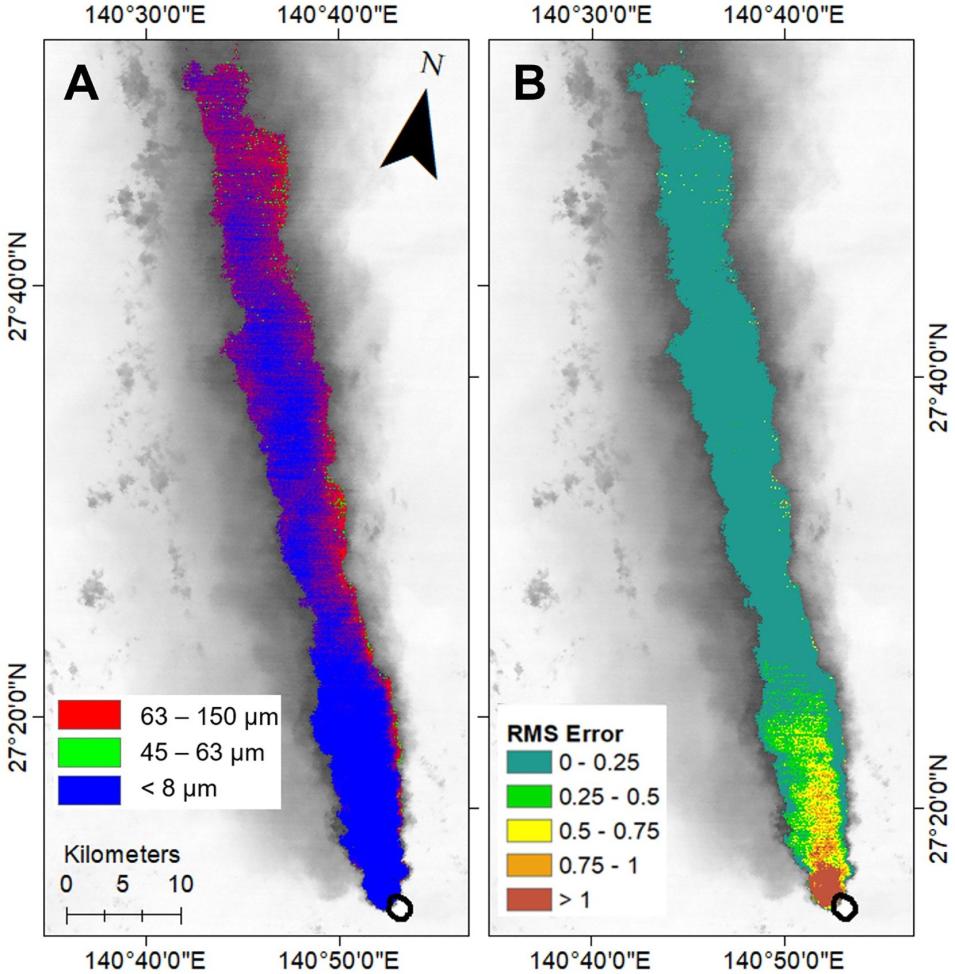Science Objectives
Minimizing the harmful effects of wildfires to biodiversity and ecosystem function requires an understanding of fuel load, or the quantity of combustible material present in a unit of area. In addition, regional fuel loads offer insight into climate-based regulation of carbon sources and sinks. Here, Liete and others (2022) utilize International Space Station (ISS) Global Ecosystem Dynamics Investigation (GEDI) Level 2A Geolocated Elevation and Height Metrics data (GEDI02_A), and Level 2B Canopy Cover and Vertical Profile Metrics (GEDI02_B) data to estimate fuel loads within the Cerrado, a wildfire-prone region in Brazil.
Instruments and Techniques Used
The authors first collected lidar data using an unmanned aerial vehicle (UAV) over sample plots within the region associated with differing fuel loads, such as grassland, savannah, and forest. Within these regions, sample vegetation plots were measured to calculate surface fuel, herbaceous fuel, shrub and small tree fuel, woody fuel, and total fuel load. Next, the UAV-based lidar data was transformed into simulated GEDI data, and random forest models were constructed using the fuel measurements as response variables and GEDI metrics as predictors. After the models were constructed, GEDI Level 2A and 2B Version 2 data products, collected across the Cerrado between April 18, 2019, and October 29, 2020, were used to estimate the fuel loads across the entire region.
Major Findings
The models performed well according to the authors, with an R2 > 0.78, root mean square error < 10.38 megagrams per hectare (Mg ha-1), and mean difference < 0.17 Mg ha-1. They performed best at estimating woody fuel (R2 = 0.88) and total fuel loads (R2 = 0.71). The models did not perform as well for the lower stratum fuels (closer to the ground) such as surface; herbaceous; and shrub and small tree. Across the Cerrado, fuel load quantities were observed to be associated with different vegetation formations; for example, woody fuels and total fuel estimates were higher in forested areas, while herbaceous fuels were higher in grasslands. The mean estimated values of surface, herbaceous, shrub and small trees, woody, and total fuels were: 7.63 ± 1.63, 7.87 ± 1.78, 7.58 ± 1.64, 10.29± 9.97 and 28.55 ± 11.4 Mg ha-1, respectively. Uncertainty was similar across the entire region, with higher uncertainty associated with regions having fewer GEDI footprints. The authors clearly demonstrated the successful use of GEDI Level 2A and 2B products to estimate multi-layer fire fuel loads at a large scale, an important contribution to wildfire prevention and planning.
References
Publication Reference
Leite, R.V., Silva, C.A., Broadbent, E.N., do Amaral, C.H., Liesenberg, V., de Almeida, D.R.A., Mohan, M., Godinho, S., Cardil, A., Hamamura, C., de Faria, B.L. et al., 2022, Large scale multi-layer fuel load characterization in tropical savanna using GEDI spaceborne lidar data: Remote Sensing of Environment, v. 268, article 112764. doi:10.1016/j.rse.2021.112764
Image Reference
Granule IDs:
- GEDI02_B_2020303150451_O10654_04_T09400_02_003_01_V002
- HLS.S30.T22LGJ.2020288T133229.v2.0.B02
Citations:
Dubayah, R., Tang, H., Armston, J., Luthcke, S., Hofton, M., and Blair, J., 2021, GEDI L2B Canopy Cover and Vertical Profile Metrics Data Global Footprint Level V002: NASA EOSDIS Land Processes DAAC, accessed February 25, 2022. doi:10.5067/GEDI/GEDI02_B.002
Masek, J., Ju, J., Roger, J., Skakun, S., Vermote, E., Claverie, M., Dungan, J., Yin, Z., Freitag, B., and Justice, C., 2021, HLS Sentinel-2 Multi-spectral Instrument Surface Reflectance Daily Global 30m v2.0: NASA EOSDIS Land Processes DAAC, accessed March 1, 2022. doi:10.5067/HLS/HLSS30.002
Source of Administrative Boundaries: Global Administrative Unit Layers (GAUL) dataset, implemented by FAO within the CountrySTAT and Agricultural Market Information System (AMIS) projects.
Data accessed via Earthdata Search:
Earthdata, 2019, Earth Science Data and Information System (ESDIS) Project, Earth Science Projects Division (ESPD), Flight Projects Directorate, Goddard Space Flight Center (GSFC) National Aeronautics and Space Administration (NASA), accessed February 25, 2022. https://search.earthdata.nasa.gov


